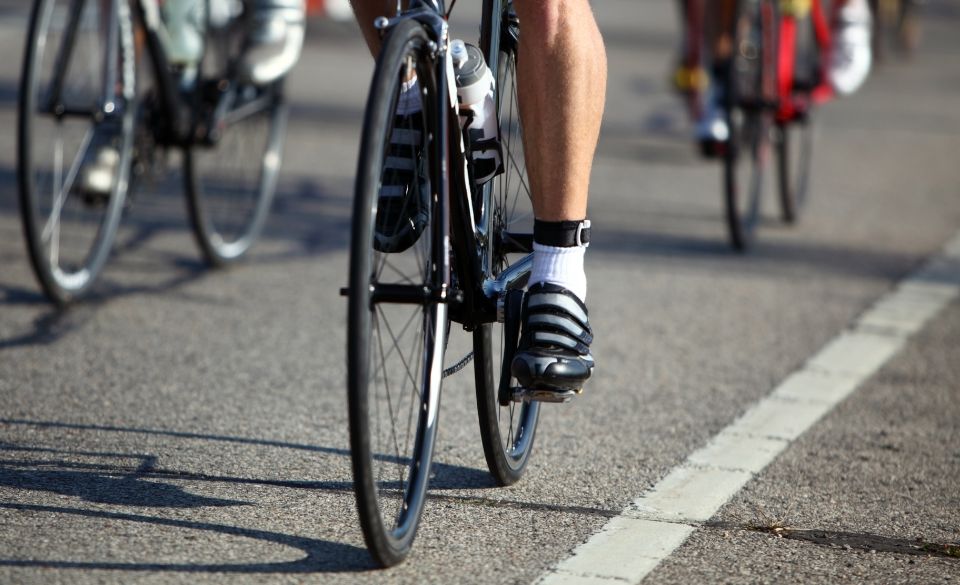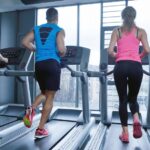
Cycling: How to Improve Your Pedal Stroke
Page Contents
- Understanding the Pedal Stroke: The Building Blocks of Efficiency
- Pedal Smoothness: The Key to Efficiency
- Building Strength: Targeted Workouts for Pedal Power
- Cadence Control: Finding Your Optimal RPM
- Technique Refinement: Practice Makes Perfect
- Bike Fit: Ensuring Proper Alignment
- Pedal Analysis Tools: Utilize Technology for Insight
- Core Strength: The Foundation of Stability
- Seek Professional Guidance: A Coach’s Insight
If you’re a dedicated cyclist, you know that the secret to becoming a more efficient and powerful rider lies in your pedal stroke. A smooth and effective pedal stroke not only enhances your speed but also reduces the risk of injury. In this article, we’ll delve into practical tips and workouts to help you improve your pedal stroke, backed by studies that highlight the importance of this essential cycling skill.
Understanding the Pedal Stroke: The Building Blocks of Efficiency
Before we dive into ways to improve your pedal stroke, let’s grasp the fundamentals. A pedal stroke consists of four key phases:
Downstroke: This is the phase where you exert the most force on the pedals, driving them downward to generate power.
Dead Spot: As you transition from the downstroke to the upstroke, there’s a brief moment where you apply less force. Efficient cyclists aim to minimize this dead spot.
Upstroke: During the upstroke, you pull your foot upward, engaging your hamstrings and hip flexors to complete the pedal revolution.
Recovery: This phase involves returning your foot to the top of the pedal stroke to prepare for the next downstroke.
Pedal Smoothness: The Key to Efficiency
A study conducted by the Department of Sport Science at the University of Würzburg found that smooth pedal strokes are associated with enhanced cycling performance. A smoother pedal stroke reduces energy wastage and helps maintain a constant speed, especially during climbs and sprints.
To work on pedal smoothness, focus on eliminating any abrupt or jerky movements during your pedal stroke. Concentrate on making your transitions between phases as seamless as possible. This not only conserves energy but also reduces strain on your muscles and joints.
Building Strength: Targeted Workouts for Pedal Power
Cycling efficiency is closely tied to leg strength. Strengthening the muscles involved in your pedal stroke can lead to more power and control. Here’s a workout routine to boost your leg strength:
Squats: Squats are excellent for targeting your quadriceps and glutes. Incorporate them into your strength training routine to build lower body strength.
Lunges: Lunges work on your quadriceps, hamstrings, and glutes, improving your ability to push and pull the pedals efficiently.
Deadlifts: Deadlifts engage your hamstrings, glutes, and lower back muscles, all of which play a crucial role in the upstroke phase of your pedal stroke.
Cadence Control: Finding Your Optimal RPM
A study published in the “Journal of Science and Cycling” emphasizes the significance of cadence control in cycling. Cadence refers to the number of pedal revolutions per minute (RPM). Finding your optimal cadence can greatly affect your pedal stroke and overall cycling efficiency.
Experiment with different cadences during your rides. A cadence of around 80-90 RPM is commonly recommended for most cyclists, but the ideal cadence may vary based on factors like terrain and personal preference. Fine-tune your cadence to discover what feels most comfortable and effective for you.
Technique Refinement: Practice Makes Perfect
Improving your pedal stroke is an ongoing process that requires practice and self-awareness. Here are some practical tips to refine your technique:
Use Clipless Pedals: Clipless pedals allow you to secure your feet to the pedals, providing better control and efficiency.
Focus on Pulling Up: Concentrate on the upstroke phase by consciously pulling your foot upward rather than allowing it to go passively.
Pedal Drills: Incorporate drills into your training sessions that specifically target pedal stroke improvement, such as single-leg drills or high-cadence intervals.
Bike Fit: Ensuring Proper Alignment
Proper bike fit plays a crucial role in optimizing your pedal stroke. An incorrect fit can lead to discomfort, inefficiency, and even injury. Consider getting a professional bike fitting to ensure that your saddle height, saddle position, and handlebar reach are adjusted to your unique body dimensions.
Pedal Analysis Tools: Utilize Technology for Insight
Advancements in cycling technology have introduced pedal analysis tools that provide real-time feedback on your pedal stroke. These tools, often in the form of power meters or cycling computers, can measure your pedaling efficiency and provide data on your power distribution throughout the pedal stroke.
By using such tools, you can gain valuable insights into your pedal stroke and identify areas that need improvement. You can then adjust your technique and training accordingly to address any weaknesses and enhance your overall efficiency.
Core Strength: The Foundation of Stability
A strong core is the foundation of a stable and efficient pedal stroke. Your core muscles play a vital role in maintaining proper posture and stability on the bike, especially during intense efforts or while climbing hills.
Incorporate core-strengthening exercises into your training routine to improve your pedal stroke stability. Exercises like planks, Russian twists, and leg raises target the core muscles and help you maintain a strong and stable position while pedaling.
Seek Professional Guidance: A Coach’s Insight
If you’re serious about improving your pedal stroke and overall cycling performance, consider seeking guidance from a professional cycling coach. A coach can provide personalized feedback, design a tailored training plan, and offer expert advice on technique refinement.
Coaching services often include video analysis of your pedal stroke, which can reveal specific areas for improvement. With a coach’s expertise and guidance, you can accelerate your progress and achieve your cycling goals more effectively.
In conclusion, your pedal stroke is a fundamental element of cycling efficiency and performance. Implementing these tips and workouts, along with leveraging technology and seeking professional guidance, can help you refine your pedal stroke over time. Remember that continuous practice and refinement are key to becoming a more efficient and powerful cyclist. As you invest in improving your pedal stroke, you’ll not only enhance your cycling experience but also achieve greater success in your riding endeavors.



